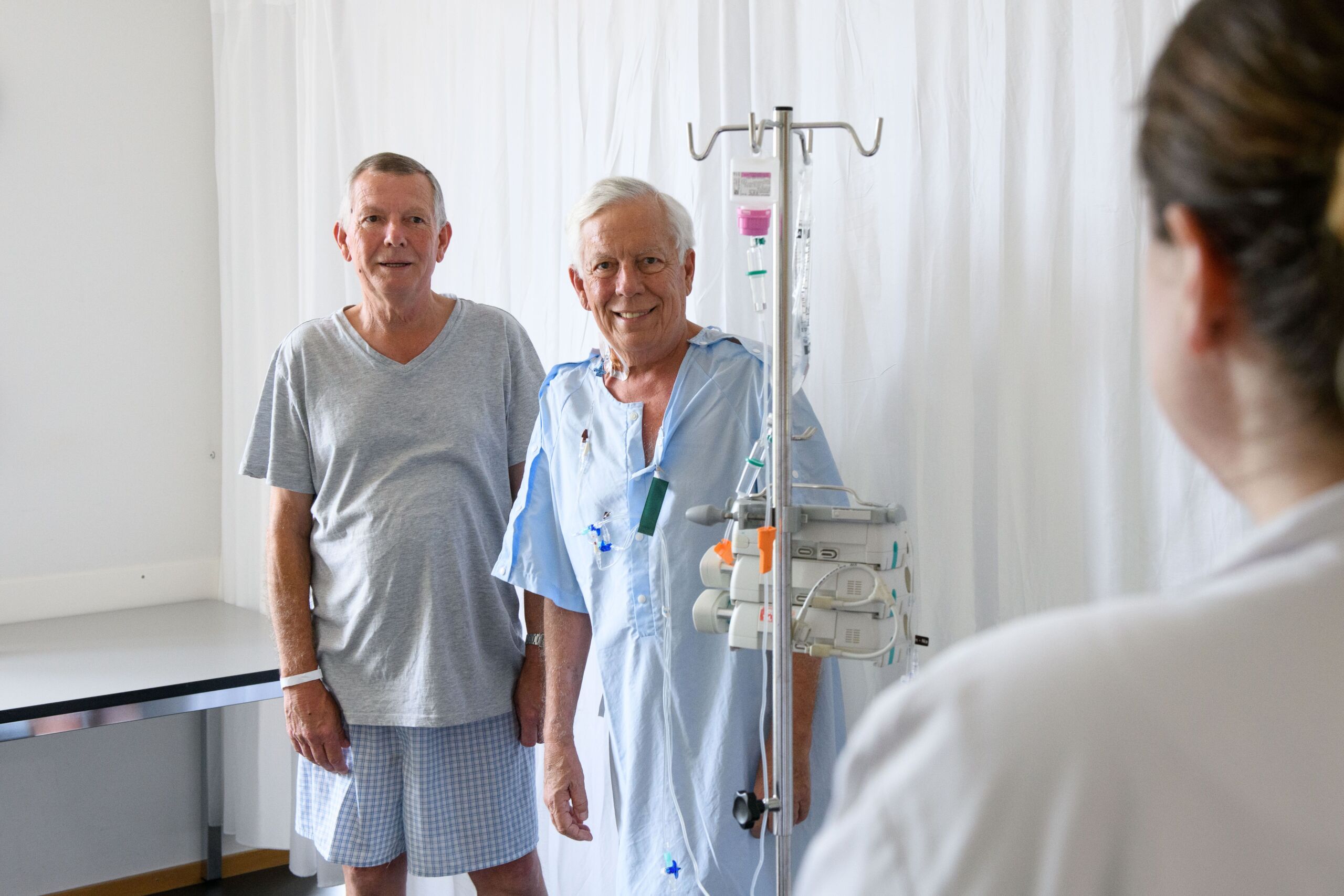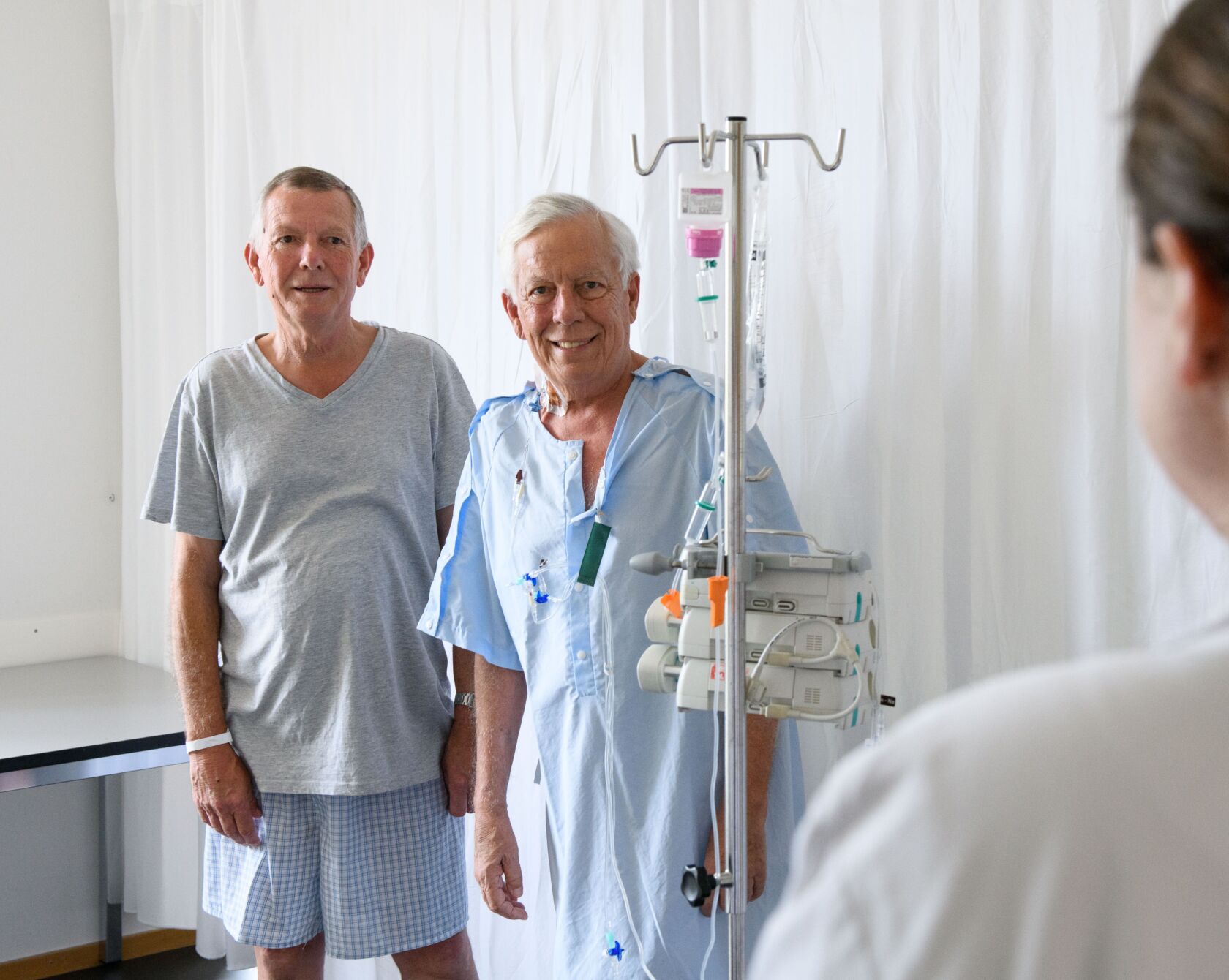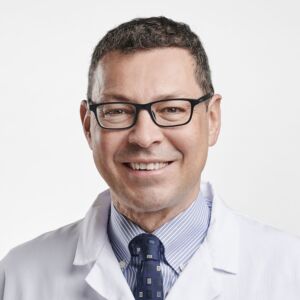For the first time at the University Hospital Zurich, surgeons removed a kidney from a living donor with help from a robot. Performing the procedure with the assistance of a robot enables further improvement in the already used “keyhole surgery” method. The donor and the recipient of the kidney – two brothers – were already feeling well shortly after their surgeries.
A kidney is transplanted from a living donor about 20 to 25 times per year at University Hospital Zurich. In many cases it is a relative or friend who donates one of their kidneys and by doing so enables one of their friends or relatives to live a normal life again. This is what happened with this donation between brothers, during which the donor organ was removed with robot-assisted surgery for the first time at USZ.
High level of precision and rapid recovery
José Oberholzer, who has been the Head of the Department of Visceral Surgery and Transplantation for several weeks, brings his many years of experience performing thousands of operations using this method to USZ. “It has been possible for a while now to remove kidneys using laparoscopy – that is, with just a few incisions”, explains Oberholzer. “The removal of a kidney is also a relatively low-risk procedure. But the use of surgical robotics has additional advantages for the donor and for the success of the transplant overall.” With robot assistance the incisions for the instruments only need to be 8 mm long and it takes less time to remove the kidney – already after just one to three days of recovery after the operation it is therefore possible for the donor to return home. The organ’s blood vessels can be prepared more precisely with assistance from the robot, especially if the donor has anatomical abnormalities, or is elderly or overweight.
Preparations on two continents
The transplant of the kidney to the donor’s brother went just as smoothly as its removal. Both of them were feeling well again shortly after their surgeries. There were two other important contributing factors: The transplant had been planned for several weeks and both the donor and the recipient were able to receive optimal medical preparation from an interdisciplinary team. Because the organ donor lives in a different country, he had the first tests concerning the suitability of his kidney were conducted by his local general practitioner, and he took an extra trip to Switzerland for the other preparatory examinations and for the donation.
For José Oberholzer and Senior Consultant Fabian Rössler, who performed this premiere at USZ together, this is an ideal case. Kerstin Hübel, a transplant nephrologist, adds: “If a kidney transplant is necessary, we first look whether there is a suitable donor among the patient’s family or friends. Luckily that is often the case. In addition to the being able to optimally prepare for the procedure, the recipient can then forgo the distressing period of waiting for a donor kidney during which his health often continues to deteriorate.”
José Oberholzer sees further opportunities for the use of robotic surgery in connection with transplants. He can thus use the robots during transplants in the organ recipients, with major advantages for overweight patients so that wound infections and other surgical complications can be avoided.

A kidney for his brother. Shortly after the surgeries, the donor and recipient were feeling fit again. (© USZ / Christoph Stulz)

